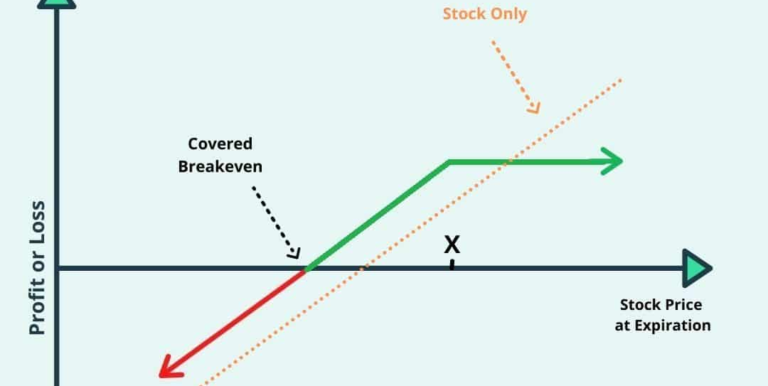Historical Market Trends in India: Month-by-Month Analysis and Major Events
The Indian stock market has exhibited distinct seasonal and event-driven trends over the years. By examining historical data, we can identify certain months and events that consistently influence market performance. From elections to budget announcements, festivals, and global economic events, let’s delve into the factors that shape India’s financial markets.
January to March: Budget Buzz and Market Volatility
- Budget Announcements (February):
- Historically, February is a high-volatility month in India due to the Union Budget. The market often reacts strongly to budget proposals, particularly changes in corporate tax rates, fiscal deficit targets, and policy changes in sectors like agriculture and manufacturing.
- Example: In recent years, announcements on capital expenditure boosts or tax adjustments have either led to bullish or bearish runs for several weeks.
- Pre-Earnings Season (March):
- As companies prepare to announce year-end results, March often sees some degree of market volatility. Investors may adjust their portfolios based on performance expectations, impacting market sectors variably.
April to June: Election Years and Earnings Season
- General Elections (April-May, every 5 years):
- Historically, the Lok Sabha elections have had a significant impact on the market. Election results often lead to a short-term rally if there is a clear majority, providing stability and policy predictability.
- Conversely, an inconclusive or hung parliament typically results in a market dip. For instance, after the 2004 and 2014 elections, the market reacted differently based on the stability and economic policies of the incoming government.
- Corporate Earnings (April-June):
- Quarterly results season, primarily spanning April to May, also contributes to market sentiment. Strong earnings reports generally push indices higher, while disappointing figures can trigger sell-offs.
July to September: Monsoon Season and Policy Shifts
- Monsoon Impact:
- The monsoon season from June to September is crucial for the agriculture sector, which has a direct impact on FMCG and rural-dependent industries. A strong monsoon often boosts the market, especially for agribusinesses, while a weak monsoon can lead to cautious trading.
- Historically, weak monsoon periods have led to reduced GDP expectations and consequent market corrections. For example, in drought years like 2009, the Nifty and Sensex showed signs of stress due to agricultural impacts.
- Quarterly Earnings:
- The second quarter results are often mixed due to the impact of monsoon-dependent sectors. Investors tend to be cautious during this period, especially in agricultural and FMCG stocks, leading to mild volatility.
October to December: Festival Season and Global Trends
- Festive Season (October-November):
- The festival season during Diwali often brings optimism in the market. Known as the ‘Muhurat Trading’ session, Diwali trading is believed to be auspicious, leading to a rally in the markets.
- Historically, the period between October and November has seen positive movements in anticipation of higher consumer spending in sectors like retail, consumer goods, and auto.
- Global Economic Trends and Year-End Volatility (December):
- December often sees fluctuations based on global economic trends, including the impact of Federal Reserve policies, geopolitical tensions, and year-end fund allocations.
- Additionally, institutional investors often rebalance their portfolios in December, leading to an increase in trading volume and price adjustments. Global events like the 2008 financial crisis and recent trade conflicts have led to volatility in the Indian markets around this time.
Significant Market Events with Historical Trends
- Crises and Corrections:
- Major financial events, like the 2008 global recession and the 2020 COVID-19 pandemic, triggered sharp corrections. During both these events, the Indian market saw drops exceeding 20%, followed by a recovery as stimulus measures and economic support were announced.
- Market Reactions to Global Events:
- Indian markets are also influenced by global events such as US Federal Reserve rate hikes, crude oil price fluctuations, and currency valuations. For instance, rising crude prices typically hurt Indian markets as India is a major oil importer.
Summary of Monthly Trends
| Month | Common Trends |
|---|---|
| January | Post-holiday adjustments, cautious trading |
| February | Volatile due to Budget |
| March | Earnings adjustments |
| April-May | Election impacts every 5 years |
| June | Monsoon dependence |
| July | Results season |
| August | Volatile; impacted by global trends |
| September | Monsoon outcomes influence |
| October | Festive spending optimism |
| November | Muhurat trading, market rally |
| December | Global trends, year-end adjustments |
January to March: Budget Preparations and Anticipatory Volatility
January: Post-Holiday Adjustments and Initial Gains
- Market Activity: Historically, January kicks off with renewed optimism as traders adjust portfolios post-holiday season. Typically, it’s a month of cautiously optimistic investments, with blue-chip and large-cap stocks often seeing increased activity.
- Examples: In 2021, January saw a rally led by large-cap stocks as investors anticipated economic recovery post-COVID-19, with a focus on sectors like IT and pharmaceuticals.
February: Union Budget Volatility
- Union Budget Impact: February is dominated by the Union Budget announcement, which typically leads to significant market movements. Policy changes in sectors like manufacturing, infrastructure, healthcare, and agriculture can trigger market reactions based on the budget’s tone and specifics.
- Historical Trends:
- 2018 Budget: The announcement of a long-term capital gains (LTCG) tax of 10% created volatility, leading to a near 5% decline in the Sensex and Nifty over the subsequent days.
- 2021 Budget: A focus on capital expenditure and infrastructure spending propelled the market, with Nifty and Sensex gaining 5% in the immediate aftermath.
- Historical Trends:
- Investment Strategy: Investors often hedge or adjust portfolios before the budget to mitigate sudden market movements.
March: Pre-Fiscal Year-End Adjustments
- Fiscal Closing: March is marked by portfolio rebalancing as the fiscal year-end approaches. The market sees adjustments based on fiscal reporting, tax planning, and speculative activity around quarterly earnings.
- Example: In March 2020, pandemic-driven lockdown fears triggered a market collapse, with Sensex losing nearly 35% from its peak. Companies adjusted projections, adding to the volatility.
April to June: Election Cycles and Monsoon Watch
April-May: Election Volatility and Market Rally
- Election Cycles: Every five years, the Lok Sabha elections have a profound effect on market sentiment. Historically, markets rally when a clear majority is projected, ensuring policy continuity.
- Historical Examples:
- 2014 Elections: The election of a stable majority government with pro-reform policies led to a bull run, with the Sensex gaining over 10% in anticipation of favorable economic policies.
- 2004 Elections: A surprising coalition result created instability fears, causing Sensex to plummet by over 20% in a week.
- Trading Strategy: Many investors adopt a wait-and-watch approach or hedge their positions through options to manage potential election-driven volatility.
- Historical Examples:
June: Monsoon and Agricultural Impact
- Monsoon Dependency: The June to September monsoon season is critical for sectors linked to agriculture, which still contributes significantly to India’s GDP. A strong or weak monsoon impacts rural demand, FMCG stocks, and even GDP growth estimates.
- Historical Context: In 2009, a weaker monsoon led to a dampened agricultural output, impacting rural consumption and pulling down FMCG and automobile stocks.
- Investment Focus: Investors often shift focus towards monsoon-dependent sectors like fertilizers, agri-products, and FMCG, adjusting strategies based on rainfall forecasts.
July to September: Monsoon Developments and Global Influences
July-August: Quarterly Results and Monsoon Influence
- Quarterly Earnings: The release of first-quarter earnings reports from major corporations can drive the market in July and August. Companies heavily influenced by monsoon performance, like agricultural equipment, food production, and FMCG, are closely watched.
- Example: In July 2019, markets reacted negatively to disappointing results in the automobile sector, an industry highly dependent on rural demand and the monsoon.
September: Global Trends and Fiscal Policy Updates
- Global Market Influence: September often reflects global economic conditions, with Indian markets being sensitive to US Fed announcements, global crude oil prices, and currency fluctuations.
- Historical Example: September 2008 was marked by the collapse of Lehman Brothers, sparking a global financial crisis. This led to a 30% decline in Sensex over the next few months.
- Domestic Policy Adjustments: Government announcements regarding inflation management, fiscal deficit updates, and trade policies can also influence September’s market direction.
October to December: Festive Season, Global Market Trends, and Year-End Adjustments
October-November: Festive Optimism and ‘Muhurat Trading’
- Festive Rally: October to November, especially during Diwali, is often associated with positive sentiment. The tradition of ‘Muhurat Trading’ during Diwali encourages a market rally, with investors viewing it as an auspicious time to buy.
- Historical Trend: Over the years, the festive season has consistently shown small but steady gains in sectors like consumer durables, auto, and retail. In 2022, for instance, markets rose by approximately 3% during the Diwali season, driven by consumer spending.
- Investment Strategy: Investors favor consumer-oriented sectors, anticipating high demand, and often buy during Muhurat Trading as a cultural practice.
December: Global Market Adjustments and Year-End Portfolio Rebalancing
- Global Economic Events: Indian markets in December are influenced by global market dynamics such as the US Federal Reserve’s interest rate decisions, geopolitical developments, and global economic growth forecasts.
- Examples:
- The 2018 rate hike by the US Fed led to an outflow of foreign investments from emerging markets, including India, causing a temporary market dip.
- December 2021 saw mixed market performance as concerns over inflation and the Omicron variant affected investor sentiment.
- Examples:
- Domestic Year-End Portfolio Rebalancing: Institutional investors often rebalance portfolios at the year-end, impacting stock prices in both large-cap and mid-cap categories. December typically sees increased volatility as investors close positions and prepare for the next fiscal cycle.
Key Historical Events and Trends Summary
| Event | Market Impact |
|---|---|
| Union Budget (Feb) | Volatile with policy announcements; LTCG, tax reforms, and sector-specific changes impact market trajectory. |
| Elections (April-May) | Clear majority leads to a rally; coalition or inconclusive results cause volatility and temporary corrections. |
| Monsoon Season (June-Sep) | Agriculture and FMCG stocks fluctuate based on rainfall strength, impacting GDP growth and rural demand. |
| Festive Season (Oct-Nov) | Positive sentiment often leads to rallies, especially during Muhurat Trading in Diwali, impacting retail and consumer stocks. |
| Global Events (Year-End) | US Fed rates, oil prices, and global crises influence December, as Indian markets respond to foreign fund movements and currency fluctuations. |
Conclusion
Indian market trends are influenced by a combination of predictable seasonal factors and unexpected global events. By recognizing these patterns, investors can make more informed decisions, balancing risk and capitalizing on recurring market tendencies.



